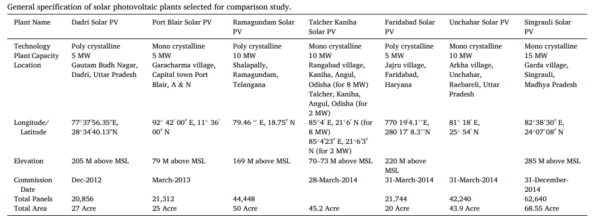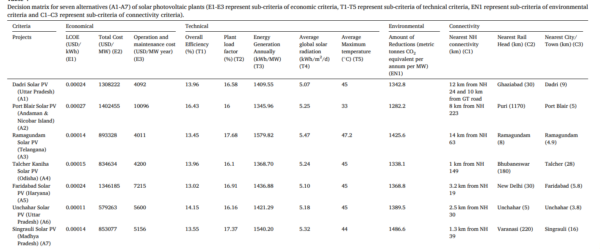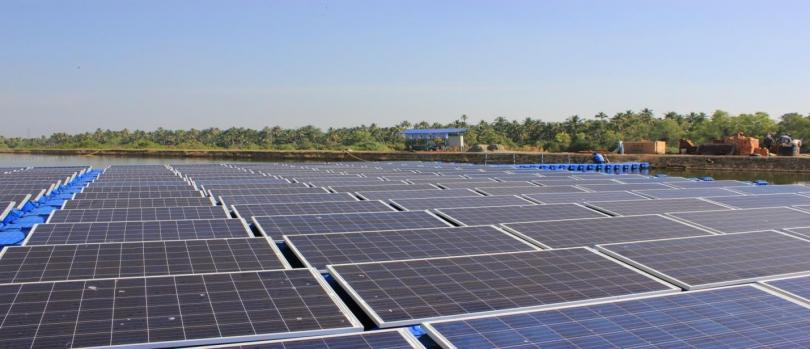Solar energy plants typically underperform due to various factors, such as the selection of the wrong location or wrong technology, the environment, pollution, extreme weather, and dirt.
Researchers at IIT Mandi evaluated seven NTPC solar PV plants in India with the goal of determining the best-performing solar PV plant in terms of cost, environment, technicality, and location. The researchers said the methodology used in their study will assist decision-makers in locating suitable sites for solar power plants.
For the PV plant evaluation, the researchers chose the following criteria in decreasing order of importance: economic, technical, environmental, and connectivity. They gave the most significance to economic criteria because of the large initial investment cost associated with the PV plants and the high operation and maintenance costs.
Dadri, Port Blair, Ramagundam, Talcher Kaniha, Faridabad, Unchahar, and Singrauli solar PV plants were chosen because they are all built by the same company (NTPC), and secondly, they cover most of India’s climatic conditions. [Dadri, Faridabad, and Unchahar are in the composite zone, Port Blair is in the tropical zone, Ramagundam and Singrauli are in the hot and dry zone, and Talcher Kaniha is in the warm and humid zone.]
The researchers, Shweta Singh and Satvasheel Pawar, used hybrid fuzzy multi-criteria decision-making methods such as F-SWARA, F-COPRAS, and F-ELECTRE to compare these solar PV plants based on four main criteria and twelve sub-criteria. They referred to the data available from the existing literature, the NTPC website, other internet resources, and through NTPC field visits for the evaluation.


The study concluded that Unchahar solar PV power plant is the best alternative in terms of performance, location, development, and management, while Faridabad solar PV and Port Blair solar PV plants are the least preferred on these parameters.
The findings favor Unchahar solar PV because it has the lowest levelized cost of energy ($0.00011/kWh) and total cost ($579,263/MW), outperforming other six plants. Also, it was found to exhibit the second highest overall efficiency (14.15%), which falls under technical criteria—the evaluation’s second most important criterion.
In comparison to other solar PV plants, the amount of CO2 reduction (environmental criteria) in the case of the Unchahar solar PV plant (1,389.5 metric tonnes of CO2 equivalent per annum per MW) is the third best. Regarding location, Unchahar solar PV also has very good connectivity values, with the nearest railhead connectivity (5 km) and nearest city/town connectivity (3.8 km).
The operation and maintenance cost for Dadri solar PV ($4,092.57/MW per year) is less in comparison with Unchahar ($5,600.35/MW per year) and Faridabad solar PV ($7,215.84/MW per year) due to installation of 64 robots for dry cleaning on daily basis.
This content is protected by copyright and may not be reused. If you want to cooperate with us and would like to reuse some of our content, please contact: editors@pv-magazine.com.









1 comment
By submitting this form you agree to pv magazine using your data for the purposes of publishing your comment.
Your personal data will only be disclosed or otherwise transmitted to third parties for the purposes of spam filtering or if this is necessary for technical maintenance of the website. Any other transfer to third parties will not take place unless this is justified on the basis of applicable data protection regulations or if pv magazine is legally obliged to do so.
You may revoke this consent at any time with effect for the future, in which case your personal data will be deleted immediately. Otherwise, your data will be deleted if pv magazine has processed your request or the purpose of data storage is fulfilled.
Further information on data privacy can be found in our Data Protection Policy.